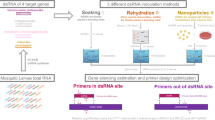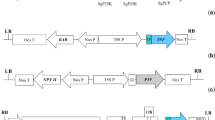Abstract
The domesticated silkworm, Bombyx mori is not only an economically important insect but also a suitable model for the study of insect immunity and molecular genetics. The silk of B. mori is composed of mainly sericin and fibroin proteins, but few other proteins are found associated with silk. Seroin proteins are the silk-associated proteins, which play a crucial role in the protection of silk from microbes. Seroin proteins have been shown to inhibit the growth of Bombyx mori nuclear polyhedrosis virus (BmNPV) in B. mori, but the mechanism of action and their regulation is not known. Here to get insight into the mechanism, in vitro incubation of seroin proteins with BmNPV budded virions prior to infection was carried out. Subsequently, infection was done using these budded virions that resulted in suppression of virus proliferation in B. mori larvae. On the other hand, the microRNA-mediated regulation of Seroin2 in BmN cells of B. mori was studied. MicroRNAs (miRNAs) are the class of small non-coding RNAs that regulate several vital biological processes through post-transcriptional gene regulation. Target sites for host-encoded miRNAs on mRNA of Seroin2 were predicted using RNAhybrid software. Bmo-miR-71 and bmo-miR-252 were found to have target sites on the mRNA of Seroin2. Ectopic overexpression of bmo-miR-71 and bmo-miR-252 in the BmN cells resulted in the significant downregulation of Seroin2 expression at the transcript level, as determined by RT-qPCR. These results indicate that seroin proteins’ direct interaction with BmNPV may decrease its infectivity and Seroin2 is plausibly under the regulation of host miRNAs.



Similar content being viewed by others
References
Altman GH et al (2003) Silk-based biomaterials. Biomaterials. 24(3):401–416
Ambros V (2004) The functions of animal microRNAs. Nature. 431(7006):350–355
Bartel DP (2004) MicroRNAs: genomics, biogenesis, mechanism, and function. Cell 116(2):281–297
Bartel DP (2009) MicroRNAs: target recognition and regulatory functions. Cell 136:215–233
Bartel DP (2018) Metazoan MicroRNAs. Cell 173:20–51
Cheng T et al (2016) Genome-wide analysis of host responses to four different types of microorganisms in Bombyx Mori (Lepidoptera: Bombycidae). J Insect Sci 16(1):69
Chengxiang H et al (2011) Differential gene expression in silkworm in response to Beauveria bassiana infection. Gene. 484(1–2):35–41
Dong Z, Song Q, Zhang Y, Chen S, Zhang X, Zhao P, Xia Q (2016) Structure, evolution, and expression of antimicrobial silk proteins, seroins in Lepidoptera. Insect Biochem Mol Biol 75:24–31
Duan J, Li R, Cheng D et al (2010) SilkDB v2.0: a platform for silkworm (Bombyx mori ) genome biology. Nucleic Acids Res 38(Database issue):D453–D456
Goldsmith MR, Shimada T, Abe H (2005) The genetics and genomics of the silkworm, Bombyx mori. Annu Rev Entomol 50:71–100
Hartig SM, Hamilton MP, Bader DA, McGuire SE (2015) The miRNA Interactome in metabolic homeostasis. Trends Endocrinol Metab 26(12):733–745
Herold HM, Scheibel T (2017) Applicability of biotechnologically produced insect silks. Z Naturforsch C J Biosci 72(9–10):365–385
Jiang L, Peng Z, Guo Y et al (2016) Transcriptome analysis of interactions between silkworm and cytoplasmic polyhedrosis virus. Sci Rep 6:24894
Kucerova L, Zurovec M, Kludkiewicz B, Hradilova M, Strnad H, Sehnal F (2019) Modular structure, sequence, diversification and appropriate nomenclature of seroins produced in the silk glands of Lepidoptera. Sci Rep 9:3797
Kundu B et al (2013) Silk fibroin biomaterials for tissue regenerations. Adv Drug Deliv Rev 65(4):457–470
Li G, Qian H, Luo X, Xu P, Yang J, Liu M, Anying X (2016) Transcriptomic analysis of resistant and susceptible Bombyx mori strains following BmNPV infection provides insights into the antiviral mechanisms. Int J Genomics. https://doi.org/10.1155/2016/2086346
Liu W, Liu J, Lu Y et al (2015) Immune signaling pathways activated in response to different pathogenic micro-organisms in Bombyx mori. Mol Immunol 65(2):391–397
Meng X, Zhu F, Chen K (2017) Silkworm: a promising model organism in life science. J Insect Sci 17(5):97
Nirmala X, Mita K, Vanisree V, Zurovec M, Sehnal F (2001) Identification of four small molecular mass proteins in the silk of Bombyx mori. Insect Mol Biol 10(5):437–445
Rehmsmeier M, Steffen P, Hochsmann M, Giegerich R (2004) Fast and effective prediction of microRNA/target duplexes. RNA 10:1507e1517
Rockwood DN et al (2011) Materials fabrication from Bombyx mori silk fibroin. Nat Protoc 6(10):1612–1631
Singh CP, Vaishna RL, Kakkar A, Arunkumar KP, Nagaraju J (2014) Characterization of antiviral and antibacterial activity of Bombyx mori seroin proteins. Cell Microbiol 16(9):1354–1365
Singh CP, Singh J, Arunkumar KP (2019) Role of toll-receptors in the inhibition of BmNPV proliferation and their interplay with antimicrobial seroin proteins in Bombyx mori. J Asia Pac Entomol 22(3):897–902
Sonkoly E, Ståhle M, Pivarcsi A (2008) MicroRNAs and immunity: novel players in the regulation of normal immune function and inflammation. Semin Cancer Biol 18(2):131–140
Sun Q, Guo H, Xia Q, Jiang L, Zhao P (2020) Transcriptome analysis of the immune response of silkworm at the early stage of Bombyx mori bidensovirus infection. Dev Comp Immunol 106. https://doi.org/10.1016/j.dci.2019.103601
Ude AU, Eshkoor RA, Zulkifili R, Ariffin AK, Dzuraidah AW, Azhari CH (2014) Bombyx mori silk fibre and its composite: a review of contemporary developments. Mater Des 57:298–305
Wang XY, Yu HZ, Geng L, Xu JP, Yu D et al (2016) Comparative transcriptome analysis of Bombyx mori (Lepidoptera) larval midgut response to BmNPV in susceptible and near-isogenic resistant strains. PLoS One 11(5):e0155341
Xia Q, Li S, Feng Q (2014) Advances in silkworm studies accelerated by the genome sequencing of Bombyx mori. Annu Rev Entomol 59:513–536
Yang Y, Tang H, Zhang Y, Zhu F, Lü P, Yao Q, Chen K (2018) Research progress on the immune mechanism of the silkworm Bombyx mori. Physiol Entomol 43:159–168
Zurovec M, Yang C, Kodrık D, Sehnal F (1998) Identification of a novel type of silk protein and regulation of its expression. J Biol Chem 273(25):15423–15428
Acknowledgements
The author acknowledges the support from the Department of Botany, University of Rajasthan, Jaipur, India, under the Departmental Research Support (DRS) programme of the University Grants Commission. The author also thanks to the members of the Laboratory of Molecular Genetics, Centre for DNA Fingerprinting and Diagnostics, Hyderabad, for assistance during experimental procedures.
Author information
Authors and Affiliations
Corresponding author
Ethics declarations
Conflict of interest
There is no conflict of interest concerning this paper.
Additional information
Publisher’s note
Springer Nature remains neutral with regard to jurisdictional claims in published maps and institutional affiliations.
Rights and permissions
About this article
Cite this article
Singh, C.P. In vitro treatment of seroin proteins to BmNPV budded virions suppresses viral proliferation in Bombyx mori larvae and ectopic overexpression of host-miRNAs downregulates the expression of Seroin2 mRNA in BmN cells. Int J Trop Insect Sci 41, 1485–1491 (2021). https://doi.org/10.1007/s42690-020-00346-x
Received:
Revised:
Accepted:
Published:
Issue Date:
DOI: https://doi.org/10.1007/s42690-020-00346-x




